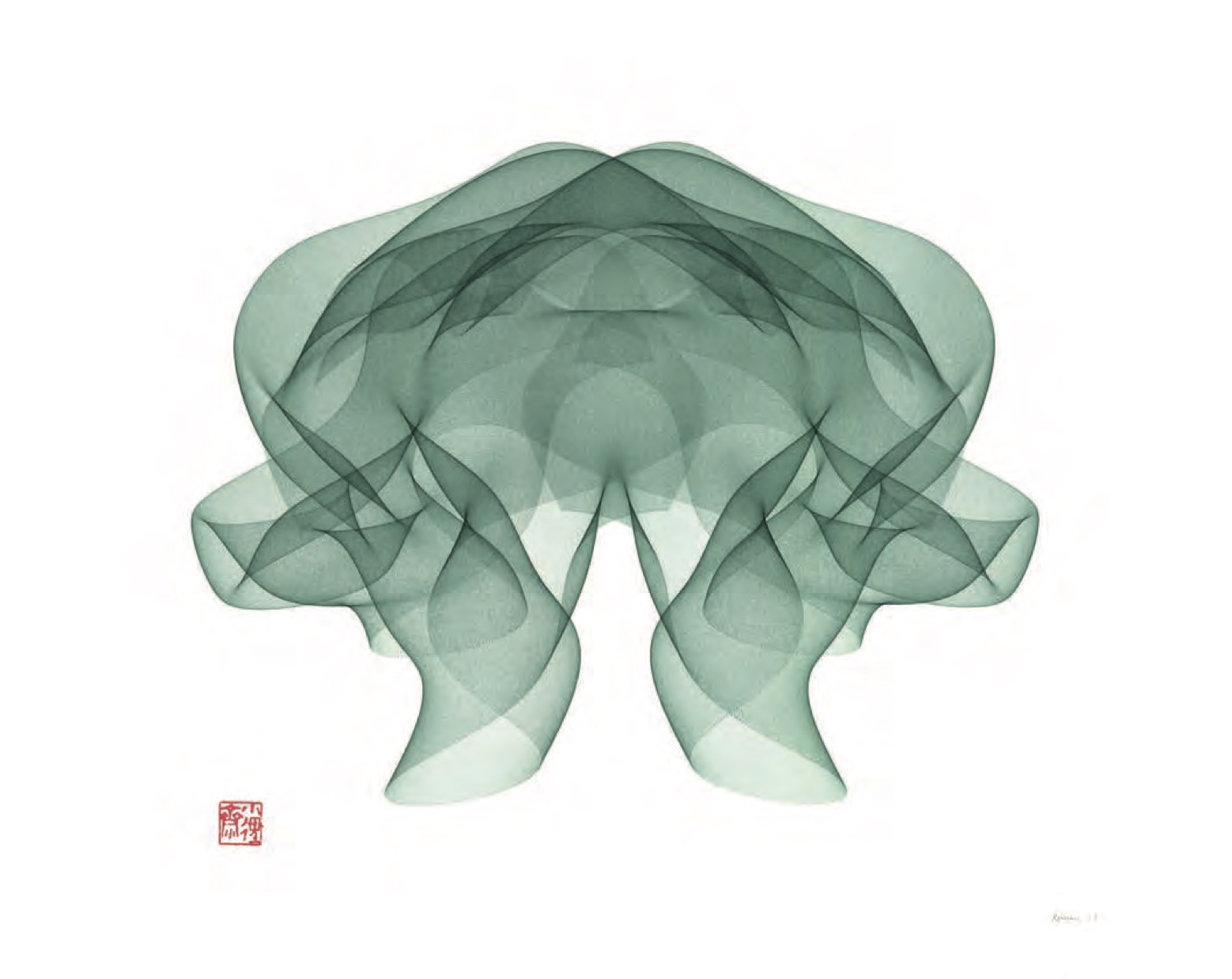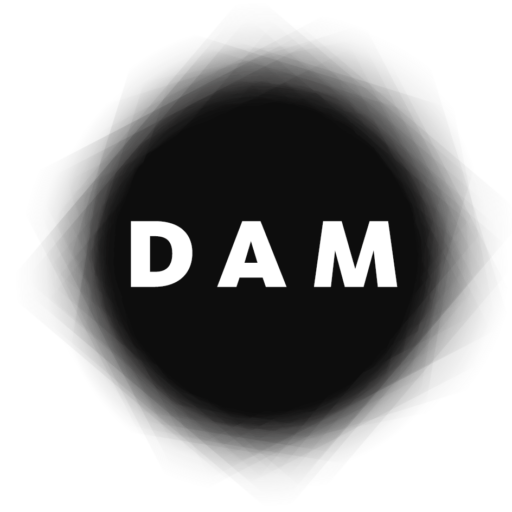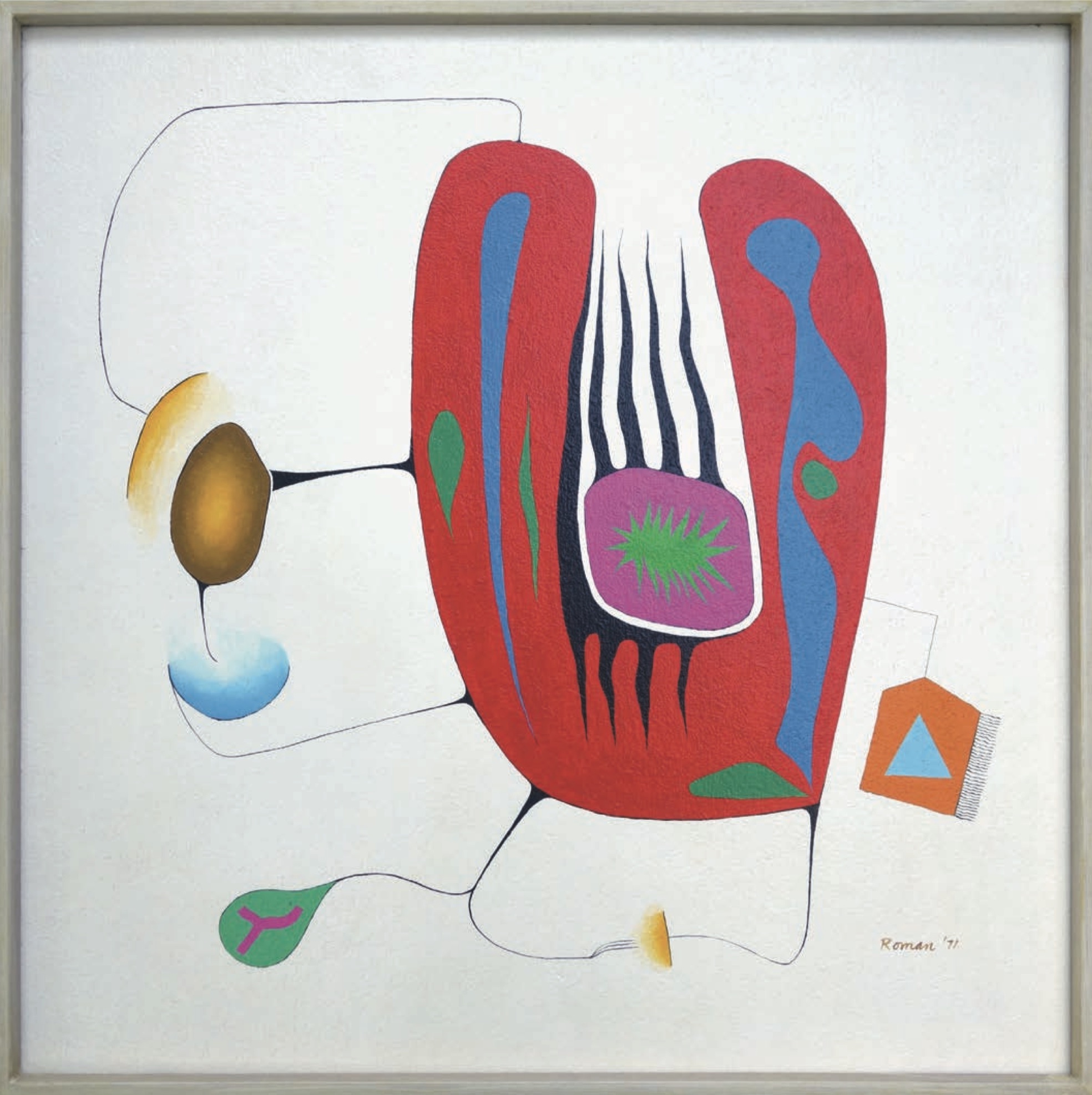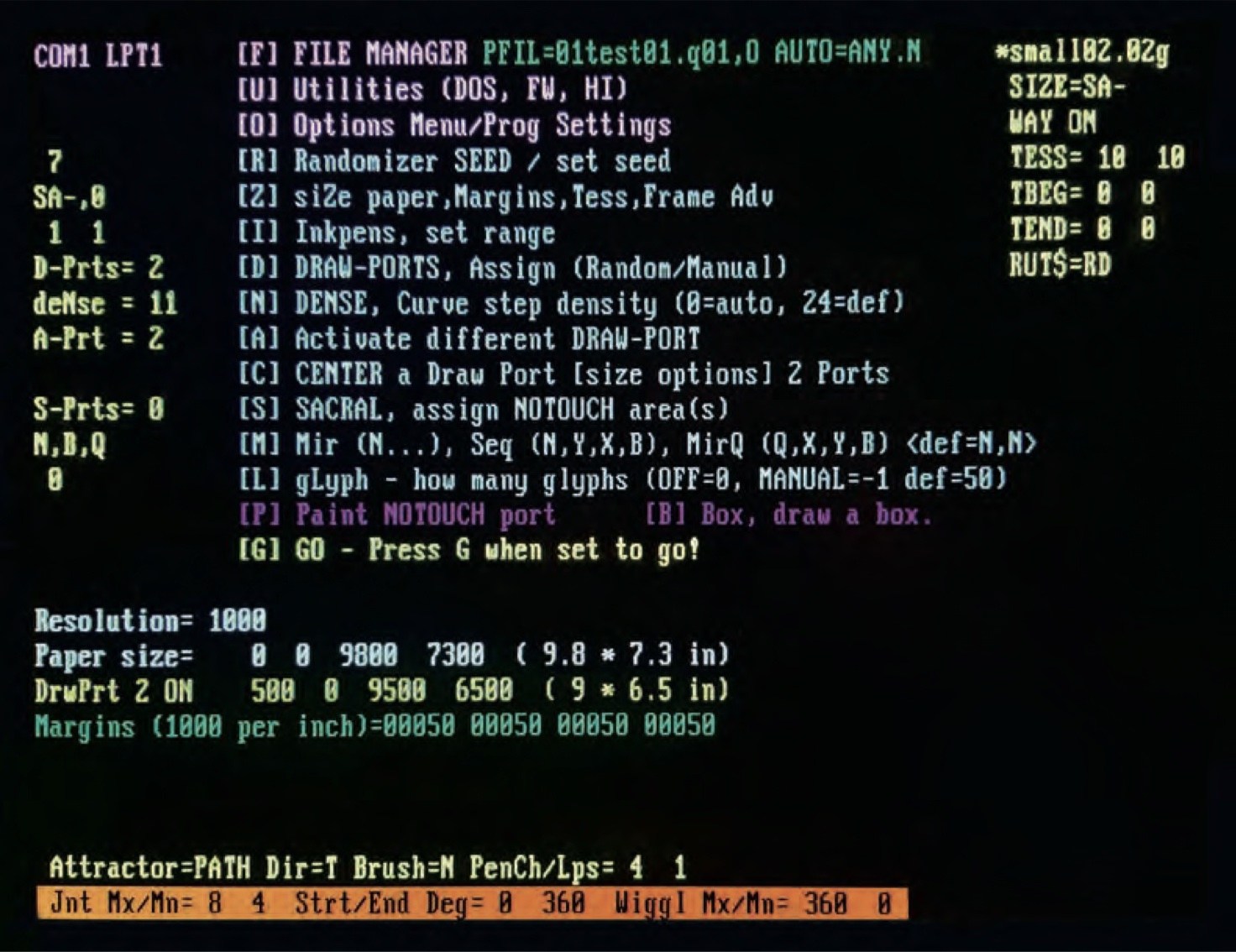
The Cloud of Unknowing: From Ideas in Mind to Ideas in Code
Roman Verostko
When I say “darkness” I mean a privation of knowing, just as whatever you do not know or have forgotten is dark to you, because you do not see it with your spiritual eyes. For this reason, that which is between you and your God is termed, not a cloud of the air, but a cloud of unknowing.
—The Cloud of Unknowing
While studying Alan Turing’s work on computable numbers, I recalled how, in my monastic years, I had come upon something parallel to the “undecidable” in The Cloud of Unknowing, a spiritual guide written by a fourteenth-century English monk. 1 In rereading his fourth chapter, I came to see interesting parallels between the author’s conception of unknowing and my own experience wrestling with the “computable” and “non-computable.” 2 For this medieval monk, the cloud of unknowing is not a darkness as in a “cloud of the air”; rather the cloud is the “privation of knowing.” By recognizing the privation of knowing, one avoids getting lost in a hopeless pursuit of trying to understand that which transcends the limits of human reason, the unknowable. Since 1968 my own spiritual pathway has traveled outside of established faith traditions, and I have embraced my experience of life without ultimate answers. This “living within a kind of question mark” sometimes leads to experience that may be likened to an encounter with the cloud of unknowing. 3 In a similar way my artwork, in all its phases, explores form-making ideas that often lead us to experience the inexplicable. While I can explain the coded procedures for generating the art, my experience of the art transcends the explainable (Fig. 1).
My life as an artist continues the same quest that seduced early twentieth-century purists.4 Form ideas underlying the evolution of my art include Piet Mondrian’s quest for dynamic equilibrium, Wassily Kandinsky’s awakening to inner necessity, and Kazimir Malevich’s reach for a non-objective world most pure, a world he imaged superbly with his White on White canvas created in 1918. 5 We could view White on White as a non-objective approach to “no-thing,” which could be likened to the cloud of unknowing.
The New City: Toward the New Jerusalem
My mature monastic work, in the 1960s, grew from my engagement with the resolution of opposites both in my life and in my art. My New City series embodied rational arrangement of geometric units in the same picture field with spontaneous brushstrokes and autonomous markings. In these works I attempted to bring opposing visual elements into a relationship where one would not dominate the other—they would be joined in a dynamic equilibrium. By merging spontaneity and rational control in the same work of art, I attempted to achieve the equilibrium I sought in my spiritual life (Fig. 2).
During my monastic years I viewed life as a transformative journey to fullness in the “Promised Land,” the heavenly place viewed as the “New Jerusalem” or the “New City.” I attempted to embed this vision in my artwork, as I noted in this statement published in the 1965 Westmoreland Museum exhibition catalog:
My paintings are spontaneous emotion; they are also calculated precision; they search to resolve oppositions in a visual dialogue; they are born from the belief that we are growing to a great love that will resolve the ambiguous and deliver us to Peace.6
My confrontations with the junction of reason and passion led me to an almost compulsive obsession with ambiguity and the “resolution of opposites.” 7 This ambiguity characterizes the “decisively indecisive” spirit in my studio since the mid-1960s. As in my spiritual life, the decidable and the undecidable would continue to haunt my studio work and my lifestyle (Fig. 3).
Transition: Imaging the Unseen
In spring 1968, following changes in my spiritual experience, I departed the monastery, married Alice Wagstaff, and took a position teaching art history at the Minneapolis College of Art and Design (known then as the Minneapolis School of Art). While I had studied programming in 1970 and was working with electronics, I also maintained a studio where I continued drawing and painting.
My earlier experience with automatic drawing in Paris and my wife’s experience with children drew me deeply into an engagement with childlike play and the wonders of human imagination. We were both interested in the marvelous spirit of an unencumbered free imagination. My Images of the Unseen, shown at the Westlake Gallery in 1972, included a statement with this observation:
I seek to evolve an image that is unlike anything seen before, yet surprisingly believable in terms of its own reality. I believe that such imagery provides “experience clues” about the nature of realities which are outside the scope of rational consciousness.8
Foraging on human imagination, I found myself once more in a zen-like state allowing an “unthinking free imagination” to guide my hand. In this state, “being free” is “being most joined.” I continued with these imagination drawings until computer programming and electronics came to consume all my studio time (Fig. 4).9
Generative Art: Software as Genotype
While my first experience writing software for a computer dates from 1970, it was not until 1981 that I had my own studio computer, an IBM 5150 PC. I began writing algorithms for short, animated, nonrepeating, visual routines that could be viewed on a color CGA monitor. In 1982 I exhibited a selection of these routines as The Magic Hand of Chance, a program that would be my first example of generative art. It was first shown in a computer parts storefront window located in downtown Minneapolis on Hennepin Avenue. 10 Twenty-one years later it was shown in the Algorithmic Revolution exhibition at the ZKM in Karlsruhe, Germany, and again in 2014 at MCAD as part of the all-night arts festival Northern Spark (Fig. 5).
By 1986, building on algorithms from my Magic Hand of Chance, I had achieved the first version of my master drawing program, named Hodos, the Greek term for “path.” 11 This program for drawing my form-generating ideas, along with a drawing machine, known as a pen plotter, evolved into my personal expert system. Pen plotters, designed for engineers and architects, were adapted by many active Algorists in the 1970s and 1980s. 12 After acquiring several pen plotters, I came to view my studio as an electronic scriptorium with my pen plotters as my “electronic scribes.” 13 By 1989 I was including digital scripts reminiscent of medieval manuscripts in generative series, such as Diamond Lake Apocalypse (Fig. 6). Many of my works are enhanced with a touch of gold or silver leaf applied by hand. On one occasion, a colleague suggested that I ship a scribe with my software as a “visiting artist.”14
My artworks are executed with a multipen plotter coupled to a PC and guided with instructions from my software. The drawing arm of the plotter, holding an ink pen and drawing on paper, bears an uncanny resemblance to the artist’s drawing arm. Choosing from an array of pens loaded with inks, it draws each individual line. Most works require hundreds of lines and occasional pen changes, which are software controlled. 15 In 1987 I created software for an optional brush routine substituting a brush for a pen. Brushstrokes are plotted using Chinese brushes adapted to the machine’s drawing arm.
Form Generators as Genotype
Form generators are algorithms that specify precise, step-by-step procedures for drawing the artist’s art-form concept. Somewhat like a composer’s score for a musical idea, an artist’s algorithm may be viewed as a “score” for drawing. It specifies procedures for every minute detail for drawing the artist’s conception for visualizing a form. Hodos consists of many integrated algorithms in a program with over a hundred variables for graphic factors such as angle, position, scale, loops, and optional subroutines (Fig. 7). Many of these variables are adjusted with random choices within parameters of “not more than” and “not less than” a given range of choices. My current program, now in its seventh version, embodies coded form-generating ideas and preferences, refined over thirty-six years. It “knows” some of my form preferences and may be viewed as a primitive form of artificial intelligence (AI).
Once all the parameters are set in a data file for a work of art, Hodos generates precise drawing instructions for the pen plotter. The software for generating the art form may be likened to a biological genotype because it contains the instructions (code) for drawing the art form. 16 Furthermore, once the parameters are set for a form, that code can generate a series of original forms bearing a “familial resemblance” (Fig. 8).
Also, the procedure for executing the code with a computer, pen plotter, paper, and pen and ink is analogous to biological epigenesis. From this perspective, the drawing process “grows” the art form and may be viewed as epigenetic. 17 My eight-hour video, the Three-Story Drawing Machine, documents this “growing” process. 18 The creation and control of such drawing instructions provide an awesome means for an artist to visualize “form-growing” concepts.
Transformations
Since 2008, after digitizing my 1970s drawings for the Upsidedown Mural for the Fred Rogers Center, I have turned more attention to continuities between my earlier and later work. Occasionally I integrate algorithmic drawings and earlier drawings by hand with various digital procedures to create pigmented digital prints I call Digital Transformations. Recent works have merged drawings with paintings from the 1960s and 1970s with algorithmic scripts yielding colorful transformations for my NASA series. 19 This colorful series of pigmented prints continues the same quest for pure form that has coursed throughout my work over the past sixty years (Fig. 9).
Content and Meaning
Over the years my software evolved by stages, yielding series of works such as Gaia, Apocalypse, Scarab, Ezekiel, and Cyberflower. Each series has distinctive formal qualities associated with its algorithmic form generators. Each work presents one more adventure in a world of forms never seen before, visual forms that have a life of their own. The artworks are visual analogs of the algorithms by which they grew. They provide a window on unseen processes shaping our experience of the world. They invite us to ponder how the stark logic of algorithms can yield such surprising grace and beauty. By doing so they point, in a humble way, to the marvelous nature of the codes underlying self, Earth, and cosmos. And if we are fortunate, they may help us know our not knowing, that marvelous moment at the junction of opposites, the cloud of unknowing (Fig. 10).
NOTES
1. The Cloud of Unknowing, edited and introduced by James Walsh, Classics of Western Spirituality (Mahwah, NJ: Paulist Press, 1981); the passage quoted in the epigraph is on page 128. 2. Alan Turing’s thesis identified a procedure for deciding “computable” propositions. In doing so he confirmed that there are propositions that are “non-computable.” Alan Turing, “On Computable Numbers, with an Application to the Entscheidungsproblem,” Proceedings of the London Mathematical Society 2 s. vol. 42 (1936): 230–65. 3. This kind of knowing is similar to the mystic’s experience that reaches the plateau of knowing that the unknowable is indeed unknowable. Such experience is a state of unknowing. Such unknowing is similar to Nicolas Cusa’s “Learned Ignorance,” outlined in his De docta ignorantia (1440). For a translation and notes, see Nicholas of Cusa: Selected Spiritual Writings, translated and introduced by H. Lawrence Bond, Classics of Western Spirituality (Mahwah, NJ: Paulist Press, 1997). 4. By purists, I mean those abstract artists who rejected descriptive line and color entirely. Preferred terms for such art in the first quarter of the twentieth century include concrete art, non-objective art, and the New Realism. 5. For Malevich, the non-objective world transcends our experience of the material world of objects. His White on White, with a tilted white square fading into white, exemplifies this experience (Suprematist Composition, White on White, oil on canvas, 31 1/4 x 33 1/4 in., Museum of Modern Art, New York). 6. Exhibition catalog, Westmoreland County Museum of Art, on my website, http://www.verostko.com/archive/shows-gr/westmoreland_museum_ catalogue_1965.pdf. 7. This play between opposites echoes Lao Tzu’s observation that ”existence and non-existence give birth, the one to the other.” See Lao Tzu, Tao Te Ching, trans. James Legge, vol. 39, Sacred Books of the East (Oxford: Oxford University Press, 1891). 8. Today I would view the experience clues as pointers to the cloud of unknowing. 9. Large folios of these drawings were resurrected in 2007, digitized, and formatted for the Upsidedown Book and Upsidedown Mural for the Fred Rogers Center at Saint Vincent College in Latrobe, Pennsylvania. For more information, see Jewelweed Impressions, http://www.jewelweedimpressions.com. 10. John Scobee, who taught me a lot about assembling a PC, opened one of the first PC parts stores known to me. As I recall, we ran The Magic Hand of Chance on a CGA monitor in a window position that attracted some attention. 11. I wanted a classical Western term for way (tao) for my Pathway Studio, which would explore new “pathways for drawing.” Wang Dongling carved the seal for my studio in 1989. For more information, see “Pathways Studio,” at my website, http://www.verostko.com/seal.html. 12. See my history of the term Algorist at my website, http://www.algorists.org. 13. My first plotters were Houston Instrument DMP52 multipen plotters with fourteen pen stalls. Later DMP62s and Summagraphics 8000 plotters had only eight pen stalls. My code was written to address a color palette for up to fourteen ink pens, but my palettes ranged from one or two pens up to about five or six. 14. On several occasions I traveled with one of my “scribes” to demonstrate Hodos or conduct a workshop. We shipped one to the Ars Electronica’s conference CODEThe Language of Our Time, Linz, Austria, Sept. 6–12, 2003. Both my wife and I demonstrated various routines including brushwork. We did the same for the LABoral grand opening in Spain, 2007, FEEDBACK, LABoral Centro de Arte y Creación Industrial, La Universidad Laboral, Gijón (Asturias). 15. See “Art and Algorithm,” ISEA’94, at my website, www.verostko.com/alg-isea94.html. 16. The biological term for a plant seed is genotype. The seed contains all the instructions required for growing the plant. 17. Epigenesis, borrowed from biology, refers to the process whereby a mature plant is grown from a seed. The seed contains the genetic code, the genotype, for growing the plant. By analogy, the software as a “form generator” contains the code for drawing the artwork. The procedure for drawing the work, analogous to “growing the plant,” may be viewed as epigenetic. See my 1988 paper “Epigenetic Painting: Software as Genotype,” at my website, http://www.verostko.com/epigenet.html (published in Leonardo 23: 1 [1990]: 17–23). 18. See a compressed version of this video on my website, http://www.verostko.com/ shows/n-spark/n-spark.html. 19. I created this series in memory of my brother Charles (1931–2017), whose work with life support systems at NASA contributed to the successful flight to the moon on July 19, 1969. I considered it a great privilege to have been alive to witness the historic landing as it was broadcast live from the moon via Houston.









